Canada looks to centuries-old indigenous use of fire to combat out-of-control wildfires
This report was supported by the Pulitzer Center.
As Canada deals with the same wildfire problems plaguing the western U.S. – fires of increasing intensity burning larger areas as the climate and forests change – Canadian governments are spending hundreds of millions of dollars on more and better firefighting equipment, increased personnel, fire-tracking satellites and improving community readiness.
But some experts believe part of the solution to reducing catastrophic megafires involves practices that go back thousands of years, to the land's first inhabitants: fighting fire with fire.
The indigenous people of Canada for centuries intentionally set fires on the landscape for a variety of cultural needs.
"They burned for medicinal plants, for food plants, to produce firewood, to produce teepee poles, other technological uses – warmth, cooking, everything else. It was how you survived on this landscape," said Robert Gray, a wildland fire ecologist who runs his own company, RW Gray Consulting based in Chilliwack, British Columbia.
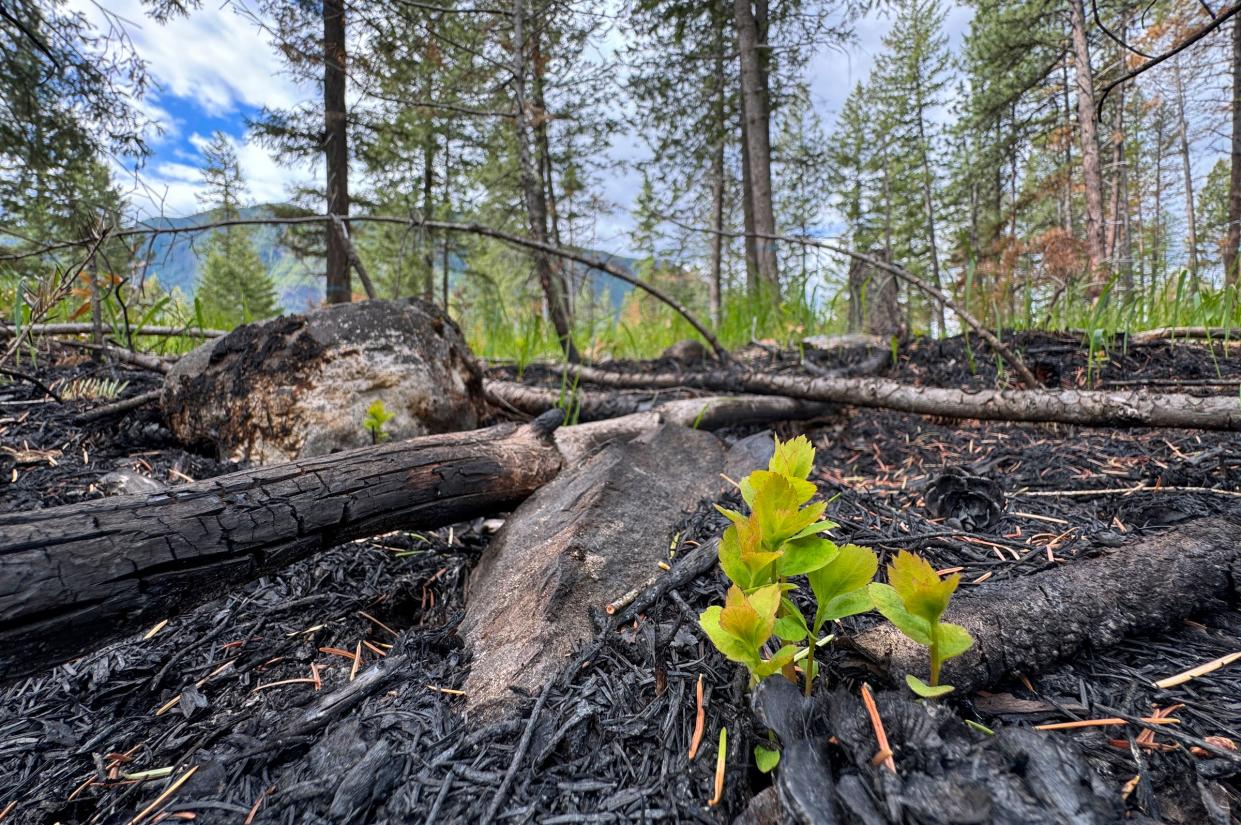
The fires set long ago by tribal members would be ignited in the early days of spring, just after snow melt; or in the late fall or winter, when they were easier to contain. Through generations of practice, the oral traditions of cultural burning were passed down among First Nations people. Firekeepers knew what plants, bushes and trees to burn, when, for particular benefits.
The lower-intensity fires used up accumulated dried, dead trees, branches and leaves on the forest floor and better spaced and diversified the forest and its mix with wetlands and grasslands.
"The result of all that burning was you didn't have 30,000- or 100,000-hectare fires," Gray said.
Banned for more than a century by European settlers, cultural burning is now making a tentative comeback in Canada, spurred by an urgency to find solutions to megafires costing into the billions of dollars that are coming with increasing frequency – a problem punctuated by Canada's record-shattering wildfire season last year. Nearly 58,000 square miles of the nation burned – an area about the size of Illinois – in more than 6,500 wildfires coast-to-coast from April to October, according to revised numbers from the Canadian Forest Service.
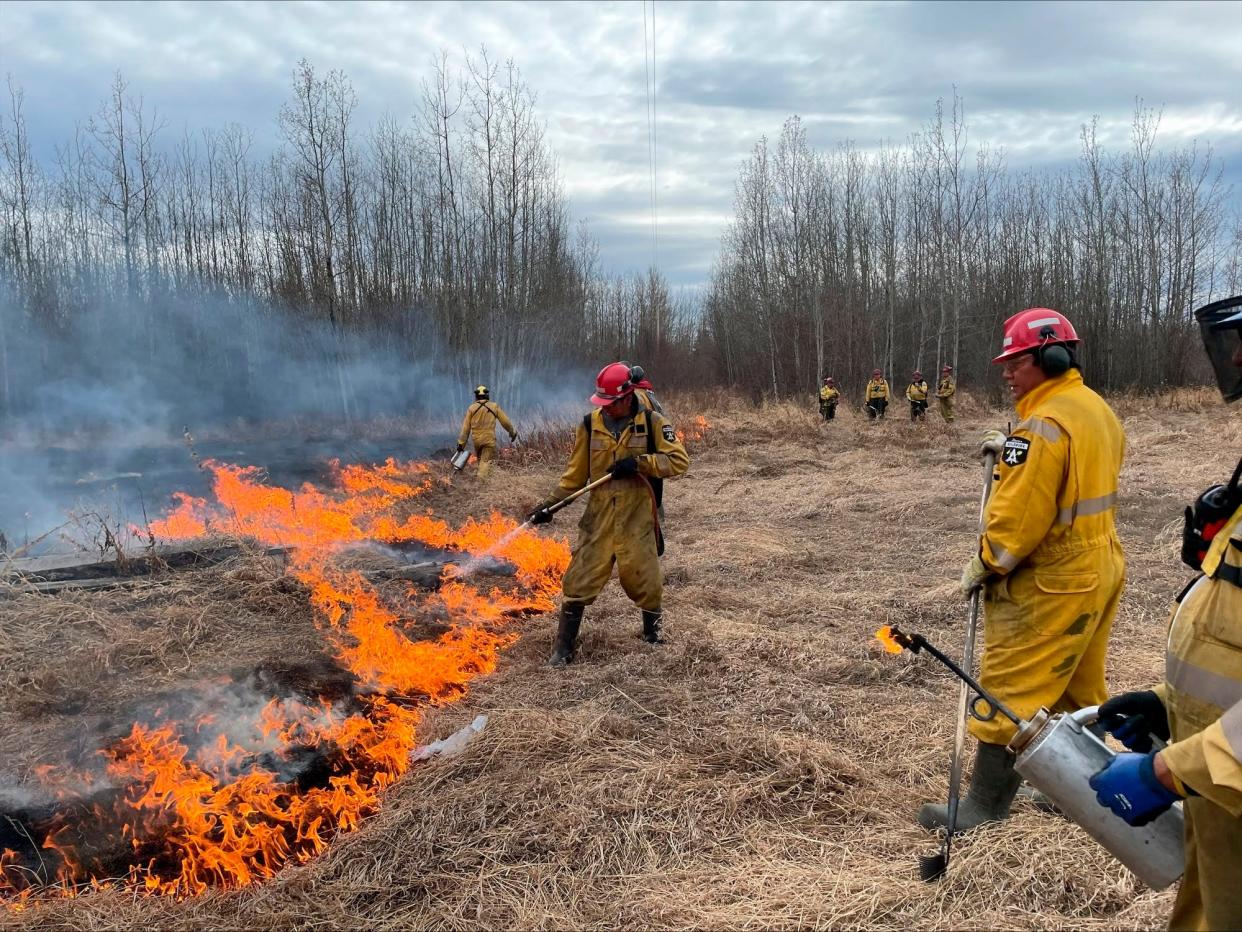
That more than doubled Canada's previous wildfire record and was more than seven times the nation's historical average. The smoke from those fires caused unhealthy air quality in U.S. cities in the Northeast, Midwest and Plains throughout the spring and summer of 2023.
Canadian provinces and Parks Canada are also increasingly looking to prescribed burning, the non-native practice of strategic fires to reduce wildfire risk, though it is still used far less in Canada than in the United States, despite Canada having more forestland.
Indigenous communities know how to use fire to reduce risk
Cultural burning goes back many thousands of years, to almost all continents of Earth, said Joe Gilchrist, a member of the Skeetchestn Indian Band, part of the Secwepemc (Shuswap) Nation in British Columbia. Gilchrist is a traditional firekeeper and chairman of the Salish Fire Keepers Society, a group of indigenous and nonindigenous members working to restore cultural burning as a more widely used practice to keep forests healthier and wildfires more in control.
In what is now British Columbia, First Nations people long ago burned every four years for berry patches or birthing places for wildlife, Gilchrist said. Some forests were burned every seven to 15 years.
"So there was a mosaic of different age groups, different field types, tree types," he said. "It wasn't just one monoculture of trees across the landscape, which it is now. Everything now is dry and dying and diseased. And these huge fires now have all the fuel they need and are pretty much unstoppable."
The evidence of cultural burning over centuries has been recorded by the forest itself. Jill Harvey is a fire ecologist and assistant professor at Thompson Rivers University in Kamloops, British Columbia, who specializes in the study of tree rings. The rings show the annual growth pattern of trees and stresses such as fire.
At one research site in north-central British Columbia, tree-ring research shows a pattern of fires going back 400 years at sites known to have been inhabited by indigenous people. At a second site, the fire record goes back nearly 800 years, she said.
"The wildfire histories that we are developing are really human-driven wildfire histories, at least in some areas," she said.
Harvey is an enthusiastic supporter of the restoration of cultural burning.
"The indigenous communities have an intimate and intricate knowledge of how fire can be used to reduce risk, and this knowledge needs to be brought to the forefront of wildfire management and planning in British Columbia and elsewhere throughout Canada and throughout the world," she said.
When European settlement came to Canada, intentional wildland burning became a crime. In British Columbia, the Bush Fire Act of 1874 made indigenous cultural burning practices punishable by fines or even imprisonment.
The loss of cultural burning as a component of forest ecology was compounded by more than a century of working to put out wildfires to protect communities and business interests. With natural patterns of forest-burning lost, tree stands thickened, wetlands and grasslands became overgrown, and forest floors became loaded with dead, dry fuels. And climate change has contributed to years of drought in central and western Canada, less snow to melt over winters, earlier springs and more intense weather events.
"It's only been more recently, in the last decade really, that cultural burning has become more acceptable and decriminalized by the government," said Kiah Allen, knowledge and research lead for the Cultural and Prescribed Fire Program for BC Wildfire Service, the province's wildland firefighting agency.
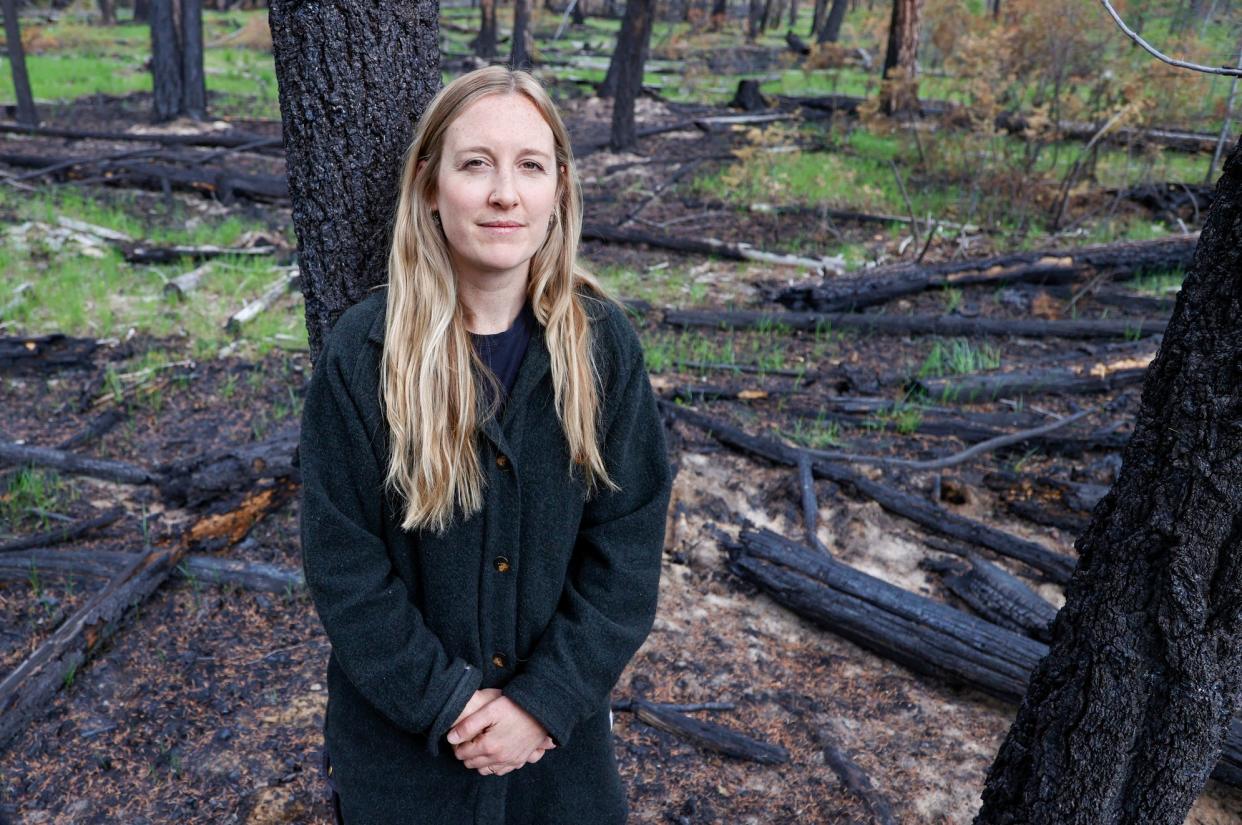
What changed? Terrible, destructive, costly wildfire after terrible, destructive, costly wildfire.
"Absolutely, the fire seasons that we've seen in 2017, 2018, '21, and now '23 have catapulted the use of cultural and prescribed fire into the limelight, and its social acceptance throughout the province for our general public, but also for the legislature, for Parliament," Allen said.
Allen and her team's job, she said, is to identify and remove red tape preventing First Nations people from using cultural burning, "for them to be sovereign."
Strong connection to land enables art of cultural burning
Gilchrist explained the cultural burning cycle.
"In late fall and into winter, you can prune the trees, put it into piles and when the snow is on the ground then you can burn those piles," he said. "You start to bring the forest back to the way it was."
Spring burning comes just after the snows melt, when "it just starts to warm up and then the grass gets crunchy," Gilchrist said.
"It's a low-intensity burn, and it's really easy to control. You use existing breaks like deer trails, cow trails, horse trails and roadways, existing rivers and lakes and things like that, that kind of curl the fire in.
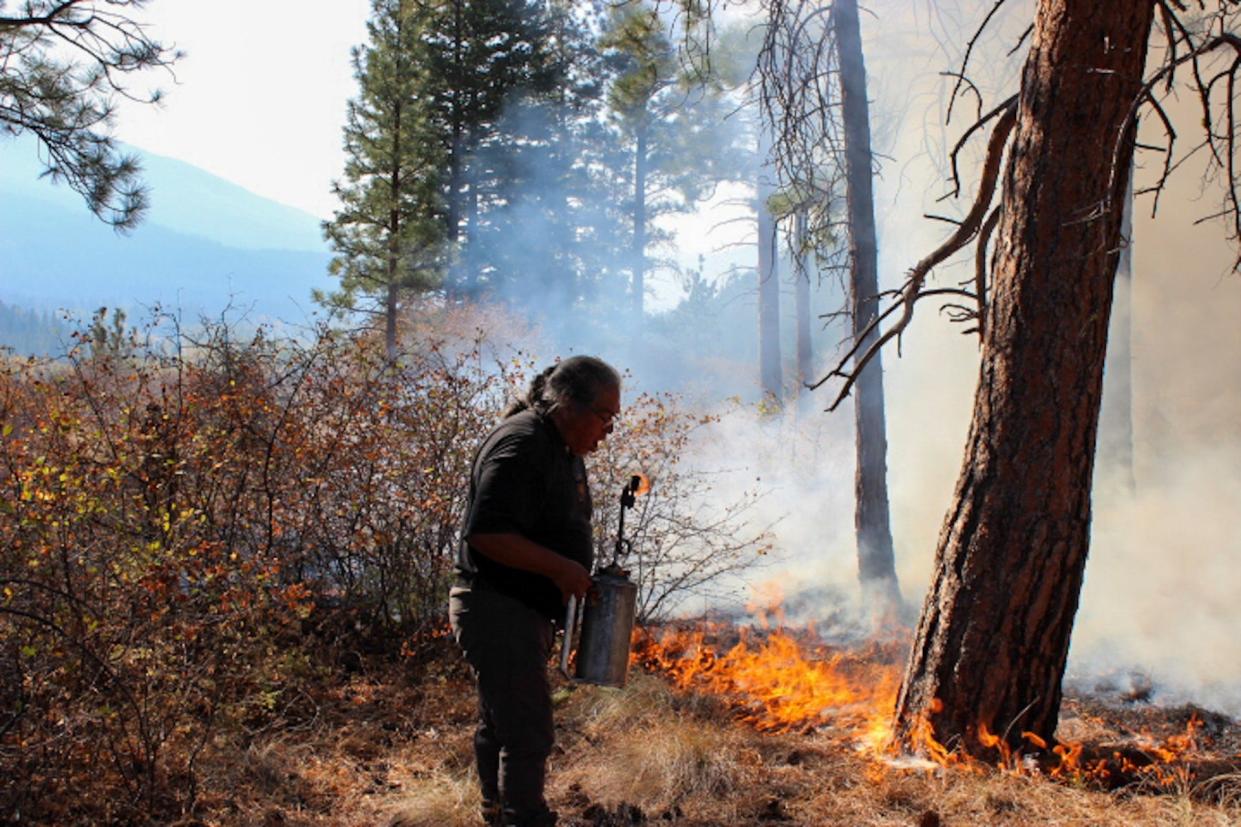
"Some days you just burn for one day, and there is very little smoke. You mind the wind so that smoke doesn’t go into a community or roadway – and if it does, you are able to put it out and wait for another day."
When, where and what is burned is the art to cultural burning, the practices passed down in oral traditions over generations, Gilchrist said.
"That's where people make the decisions on whether it's going to mule deer or winter range for moose or elk or whether you're going to pick herbs in a meadow, or in a riparian area or wetlands – different kinds of things and their different burn cycles," he said. "And when you have as strong a connection to the land as your ancestors did, you have a good sense of where you want to do the different things."
Gilchrist said Salish Fire Keepers conducted five cultural burns this past spring on territorial lands within First Nations territories, over about 250 hectares – about a square mile – of land.
"We are hoping to continue doing bigger and more burns in the future," he said. "And, hopefully, it becomes legal to burn off the reserve. We could make the forest so much better."
Not all fire is bad; Canada moves toward prescribed burns
Prescribed burning – the planned, strategic use of fire in the forest to lessen wildfire danger to communities or other interests – is a far more utilized practice in the United States than in Canada.
A report on the nationwide use of prescribed burning in the U.S. from the National Association of State Foresters and the Coalition of Prescribed Fire Councils showed 9.4 million acres treated in 2020, the second-highest number reported in survey history. The Canadian Interagency Forest Fire Centre, meanwhile, reported just under 327,000 acres of prescribed burning in Canada in 2023.
"Within our area, historical practices have been focused on timber management," said Kenny Forbes, a wildfire prevention officer with BC Wildfire Service.
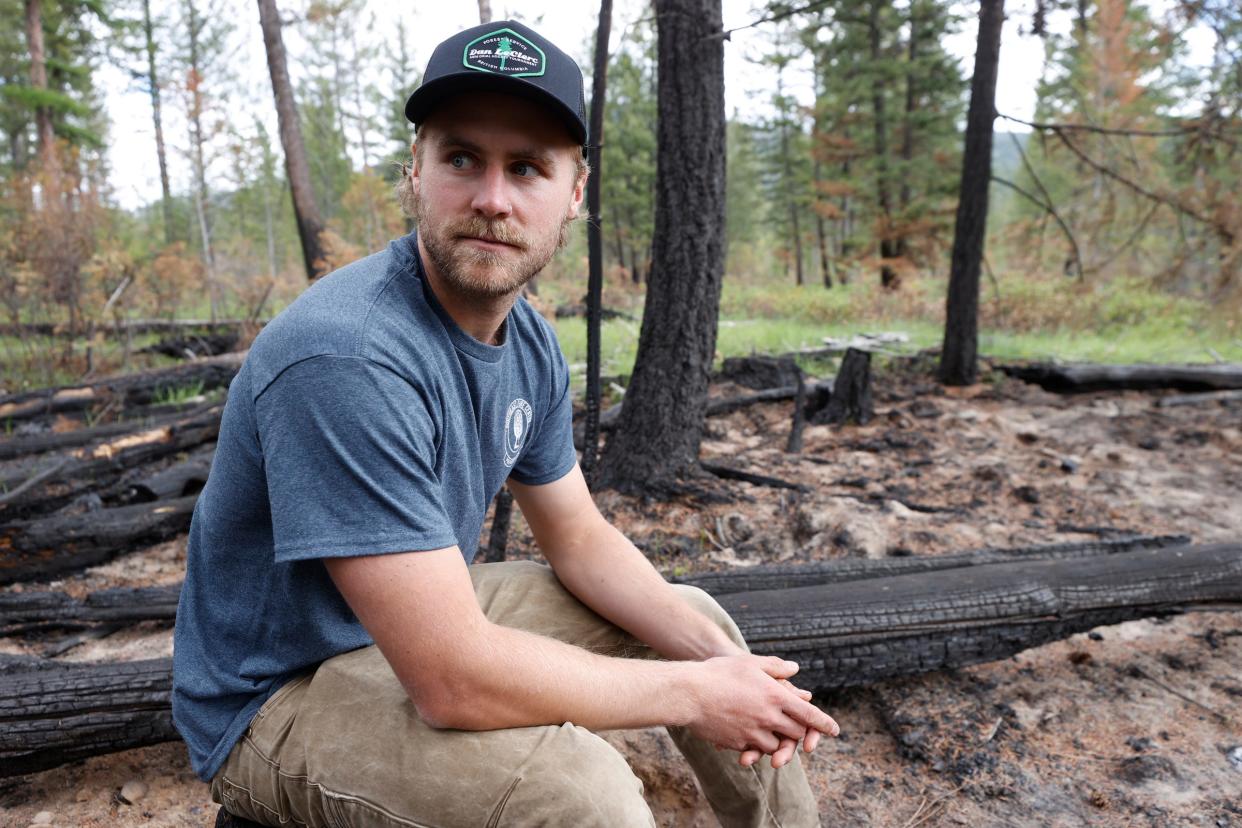
Colonial governments, Gilchrist said, "made a decision that fires were bad – kind of a Smokey the Bear attitude. Get every fire under control within a day."
That's changing.
"As part of wildfire prevention and fire management, we have to do controlled burns at the right time of year to burn out that type of (accumulated forest) fuel. And that work has already started," said Harjit Sajjan, Canada's minister of emergency preparedness.
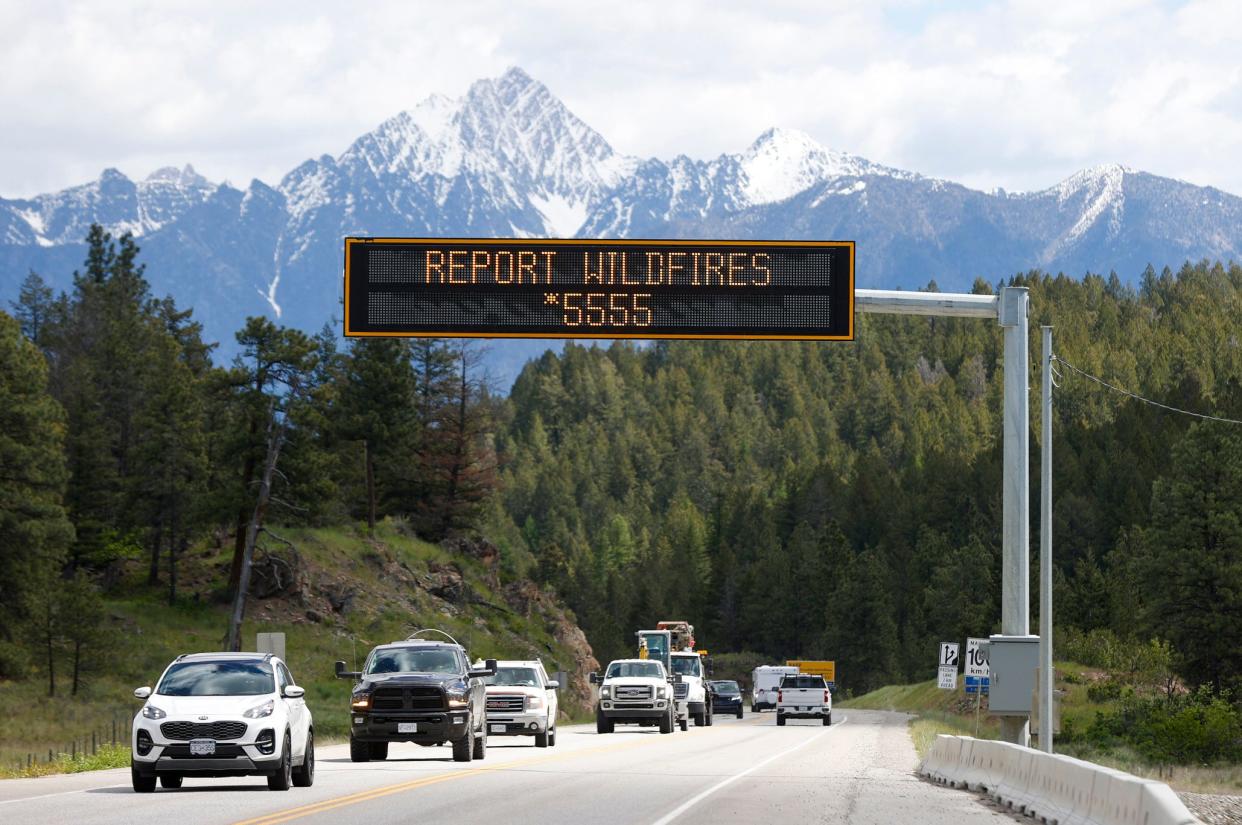
Sajjan cited work he has seen accomplished in the Yukon, where fire managers studied wind patterns, determined the most likely path of a catastrophic wildfire to population centers and created a fire break in the surrounding forest to mitigate potential impacts on the province's capital city of Whitehorse.
"Different provinces and territories are at different levels" of putting prescribed burning and forest fuels reduction into practice, Sajjan said.
How a prescribed burn saved a critical airport
Prescribed burning has true believers in Cranbrook, British Columbia. Officials there credit it with saving their airport.
Gray has worked with the community over the past two years to do tree thinning and prescribed fire to the area surrounding the Canadian Rockies International Airport in Cranbrook – on the west side of airport property two years ago, and on the south and east sides in April 2023. The work last year was done in conjunction with 1,200 hectares – about 3,000 acres – of prescribed and cultural burning at the nearby Aq'am First Nation community.
That work was tested by the St. Mary's River wildfire less than three months later, in July 2023. Started by downed power lines and boosted by strong winds, the fire grew to nearly 10,000 acres, destroying homes in the Aq'am community and prompting evacuations. But in the treated areas of Aq'am and around the airport, the fire was held back.
"That (tree thinning and prescribed burning) proved to be really critical," said Michelle Shortridge, an Aq'am First Nations member and director of operations for the community at the time of the wildfire.
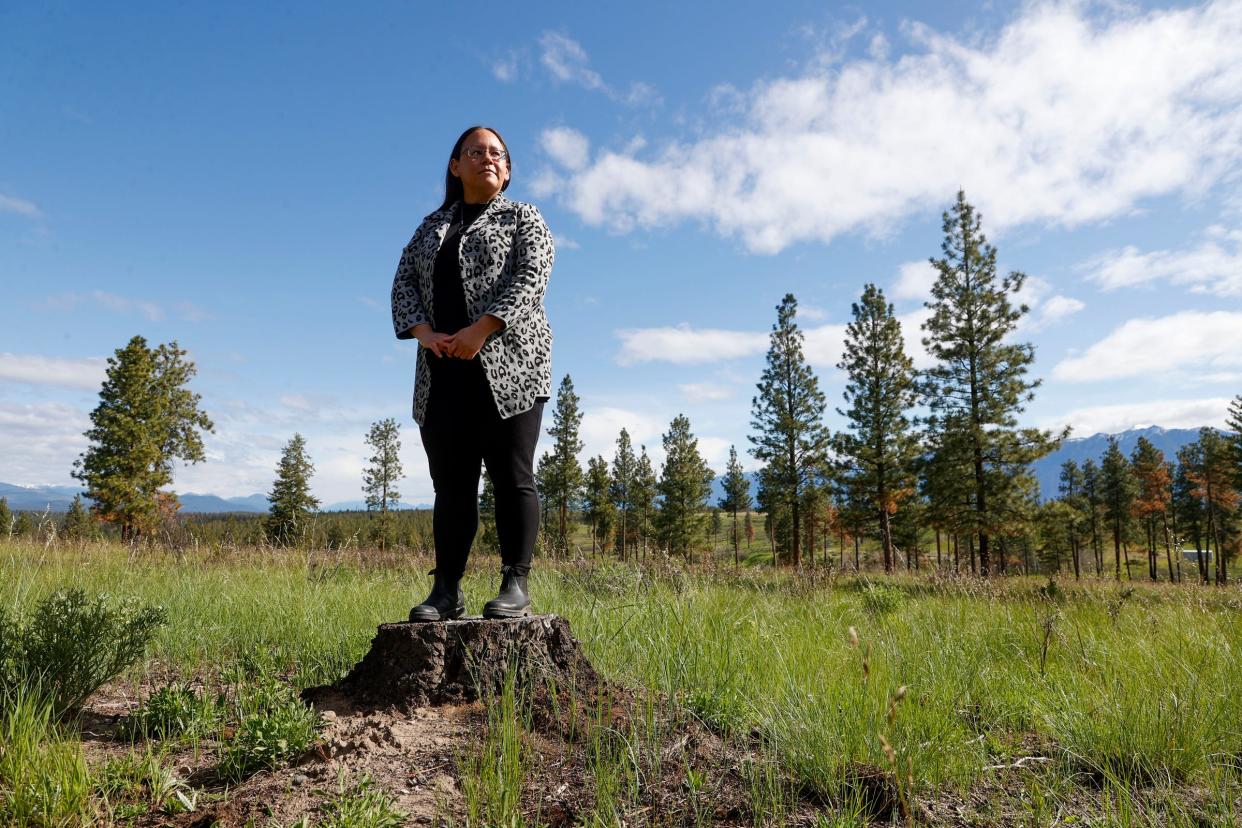
"That prescribed fire protected the critical assets at the Canadian Rockies International Airport as well as allowed for crews to focus their efforts elsewhere, including on the protection of homes and lives when the wildfire blew through our community."
Airport manager Tristen Chernove showed photos he took with his phone one of the early nights of the wildfire, as a wall of flames headed toward the airport's fence line.
"It was a pretty out-of-control fire for a period of time," he said. "It was very close by, heading this way, and when it butted up against the prescribed burn from the spring of that year, it diminished to the point where we were fine to keep the air tanker base" – the airplanes dropping water and fire suppressants on the blaze – "operating from this airport."
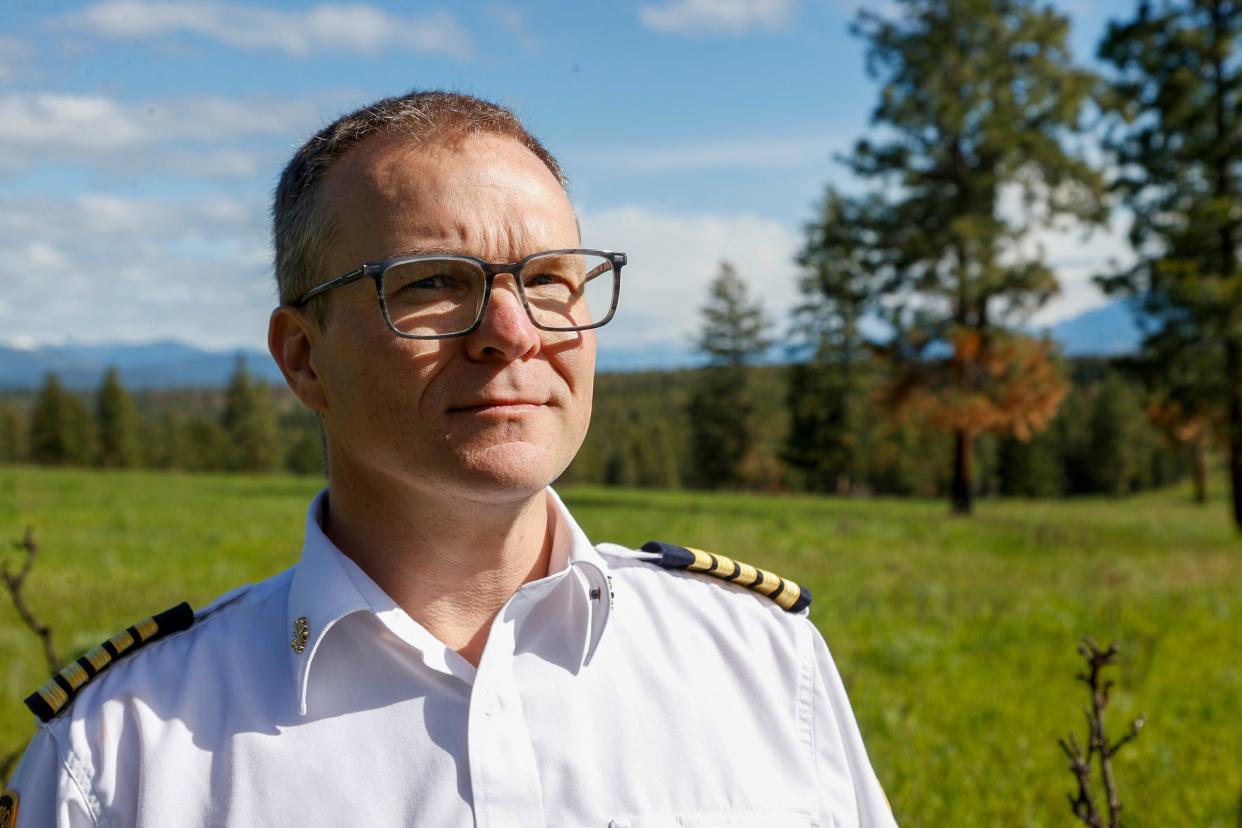
Cranbrook Fire Chief Scott Driver, a member of the department for more than 20 years, said he remembered early in his career addressing almost nothing except structure fires in the city. Now firefighting requires an additional set of skills.
"The wildfire risk to communities is moving out of the backcountry and into the front country," he said. "Now it's a whole other job that's added to our portfolio in terms of wildfire suppression and response capabilities – having to understand what wildfire is and how it's different than structural fire. It's a very different job but now we have to do both at the same time."
Fear is a motivator
Less than 20 miles to the northwest of Cranbrook, in Kimberley, British Columbia, the community of about 8,400 residents is working to protect itself from wildfires by conducting tree thinning, fuels reduction and prescribed burning in areas that wind patterns, and wildfire history, show could bring a large wildfire to the city center.
Fire mitigation practices have been conducted since the early 2000s, and weren't well received at first by residents, Mayor Don McCormick said.
"People love the area we live in; they love the trees," he said. "And the thought of taking any of this down and doing things like prescribed burns was just not part of the psyche."
A 2018 wildfire that threatened the community and had residents on evacuation standby for three weeks helped change that, he said.
"That completely changed the support in the community for the work that we're doing," McCormick said. "There's nothing like fear that causes people to step back and say, ‘OK, what's really important to us?’ "
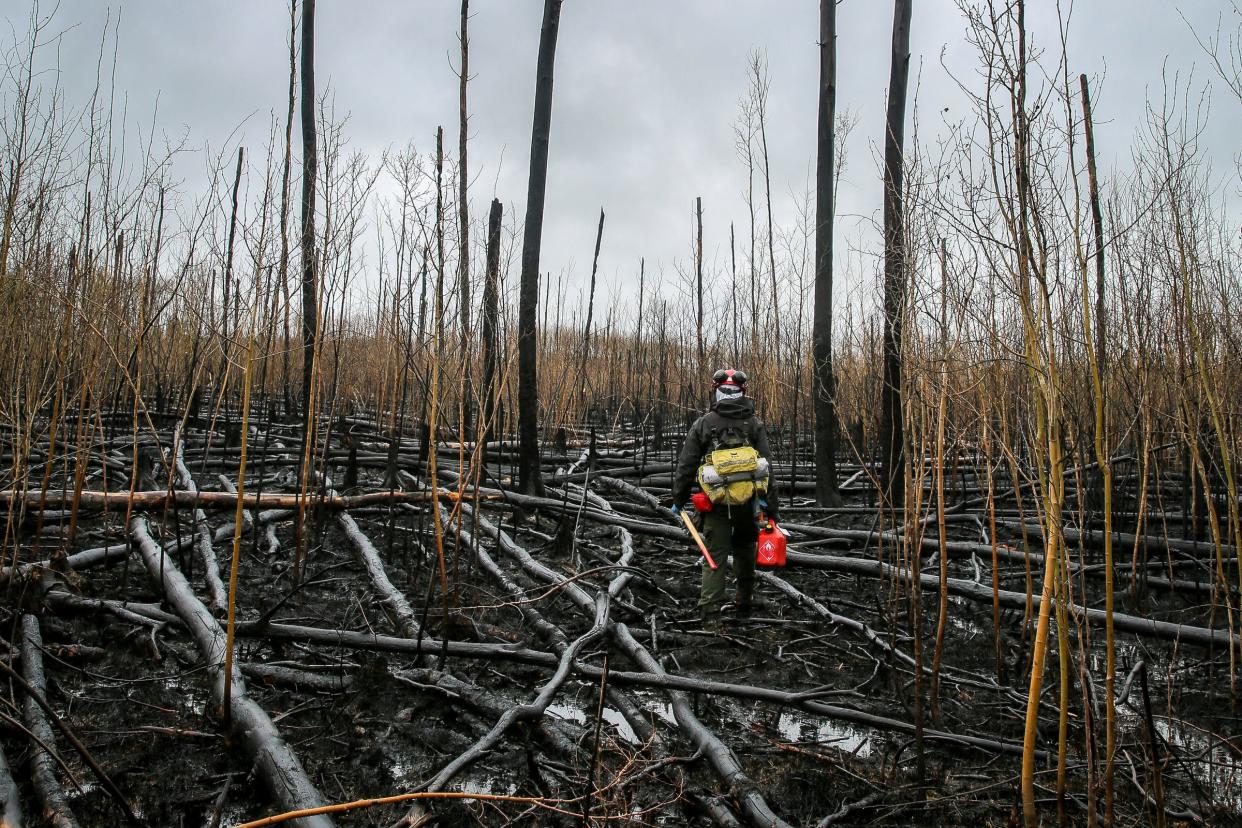
The community gets its water supply from nearby mountain streams – water so clear and pure, the city needs no filtration plant, McCormick said. A wildfire reaching those water sources could be devastating, he said.
"There is no Plan B; if that watershed goes down, we are in big trouble," he said.
In strategically mapped portions of forests near town, hand and mechanical tree clearing and branch pruning were conducted over the past few years, with a prescribed burn this spring. At another nearby location, piles of branches and vegetation are left in place on the forest floor, waiting for late fall or winter, when conditions will be better to burn them in place. The goal is to open up the thickened tree stand and remove some so-called ladder fuels – small trees and bushes that can take a wildfire off the forest floor and elevate it to the treetops, where wind-whipped crown fires can spark a megafire.
Tree and vegetation types, topography, weather, community goals – a complex mix of factors goes into a prescribed burn that require careful consideration and planning, Gray said.
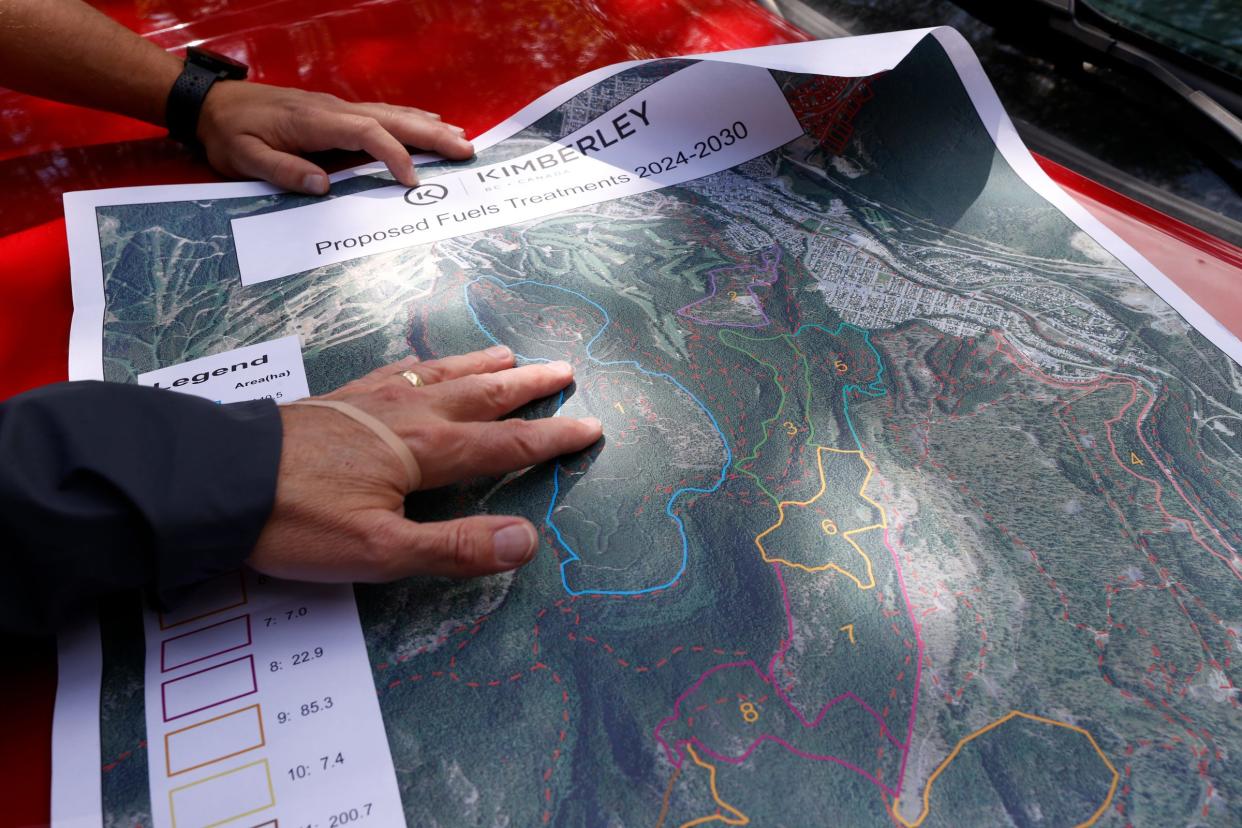
Slipups happen, and they can cause significant loss of public support. A prescribed burn in Banff National Park in Alberta in May 2023 went out of control when winds unexpectedly shifted and increased, temporarily causing alerts in the nearby city of Banff. A 1,000-acre prescribed burn by the U.S. Forest Service near Los Alamos, New Mexico, in May 2000 got out of control and sparked the 47,000-acre Cerro Grande Fire, spreading into the city, destroying 280 homes and causing damage topping $1 billion, including to facilities at Los Alamos National Laboratory, a nuclear facility.
"While I firmly believe in good fire, there is no such thing as good smoke," said Michael Flannigan, a professor specializing in wildland fire at Thompson Rivers University. "Also, there are liability concerns with any prescribed fires. ... I don't see things changing much in the near term."
But McCormick, the mayor in Kimberley, said his residents now get it.
"It's counterintuitive to light fires to prevent fires," he said. "And so people fear prescribed burns.
"If there's one thing that the St. Mary's fire proved last year, it's that prescribed burns work, and we have a whole lot more support in the community right now as a result of that. Because if that prescribed burn had not happened a couple of years ago, we would have lost our airport. And that's a fact."
The problem isn't going away, said Driver, the Cranbrook fire chief.
"We are in decades of this now, and more is coming," he said. "We are going to have to deal with this every summer for a long time. And with that recognition, I think there is more willingness to accept what needs to be done on the prevention side of things, because that's where our investments are going to make the most impact."
Detroit Free Press reporter Keith Matheny and photographer Eric Seals are the Pulitzer Center's 2024 Richard C. Longworth Media Fellows. Contact Matheny: kmatheny@freepress.com.
This article originally appeared on Detroit Free Press: Indigenous 'cultural burning' prevented wildfires in Canada's past
